Props to H. B.
Collapse
X
-
...on the other hand, we can put Booth within spittin' distance of Tumblety in 1863....February and March, in fact, at the Arch Street Theater situated on 6th & Arch Streets.
This theater is 1/2 mile from Tumblety's headquarters in Philadelphia at that time....333 Chestnut Street. A 10 minute walk.
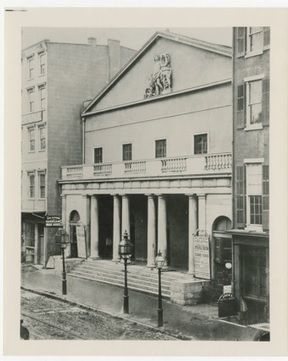
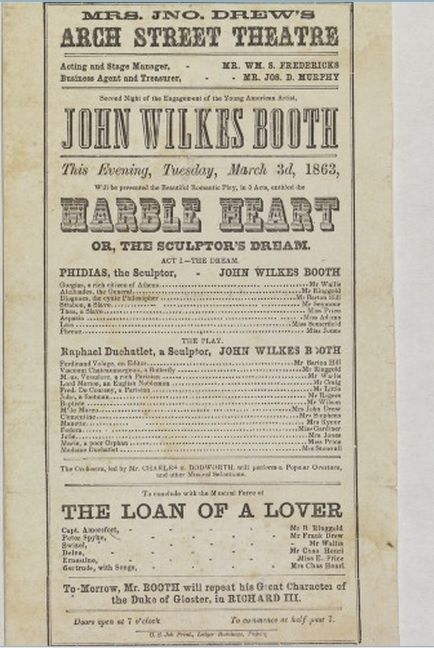
Leave a comment:
-
For the benefit of anyone interested in this Booth-Tumblety connection, here's that article in segments.
Buffalo Courier
March 31, 1914
***************
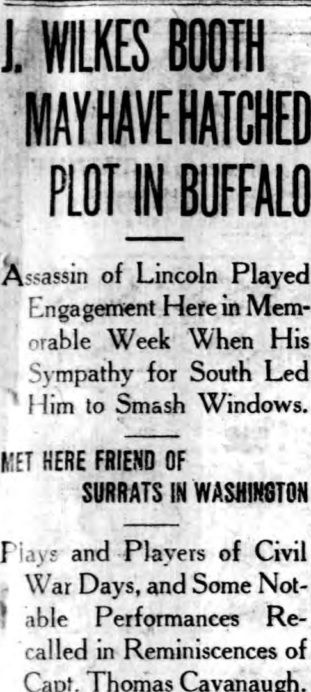
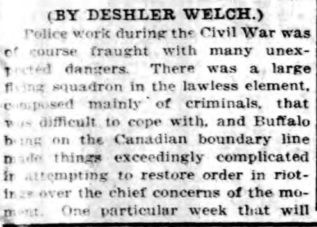
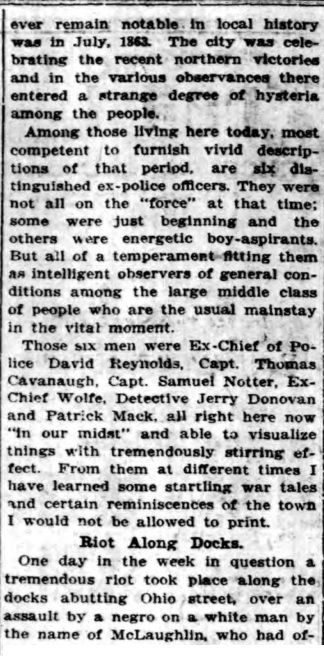
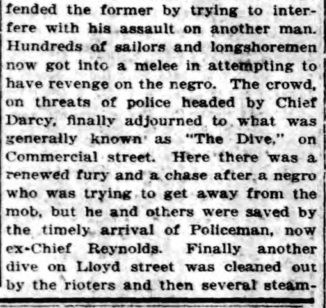
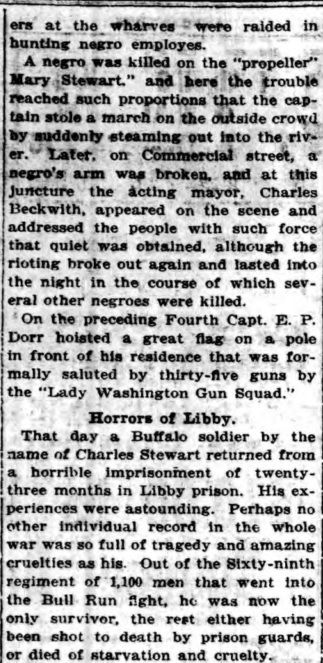
Leave a comment:
-
A couple of things that I'd posted on JTRForums....
Captain Cavanaugh mentions three roles Booth portrayed in 1863....and despite a 51 year gap in time, recalls them perfectly. Melnotte, Pescara, and Hamlet......
Booth's itinerary for July 1863 :
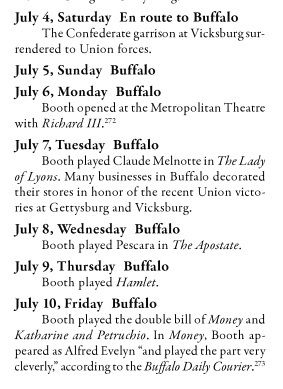
Meanwhile, also in July, Tumblety is on the lam after Philadelphia Mayor Alexander Henry orders his arrest.
It has been difficult for me to find anything regarding Tumblety and a connection to the city of Buffalo for July 1863. In Tim Riordan's 'Prince Of Quacks' , Tim ( on page 94 ) points out that Tumblety headed north and 'may have visited family in Rochester' and was practicing in Albany in September.
North American
Philadelphia
July 3, 1863
***********
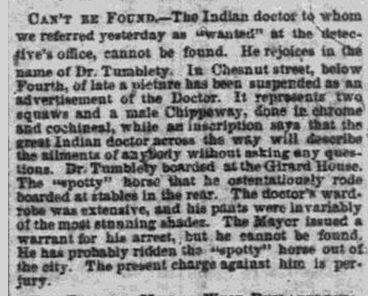
Leave a comment:
-
Some time back I read in some book (I'm sorry I'm vague on this) that during the search and prosecution of Lincoln Conspirators under Stanton, Conover (great name for a liar) was a government prosecution witness and was being used to build up cases against George Sandars, Luke Blackburn, Jefferson Davis, and even President Andrew Johnson (there was an attempt to prove Johnson was in a plot to become President) when Conover's double agent nature was revealed in court. It knocked the props out of the value of any of his testimony, and helped end the series of assassination investigations and trials (the second and last was against John Surratt when he was captured) by 1868,Originally posted by mklhawley View PostThis is from Joe Chetcuti.
The latest newspaper discoveries by Howard Brown revive an old topic.
Sandford Conover speaking of Tumblety's days in Washington D.C. during the Civil War:
(Tumblety) had very cosy and tastefully arranged quarters in, I believe, H Street.
Years ago on the Casebook, I focused on that quote. I suspected it was a sly maneuver by Conover to try to link Tumblety with H Street. That is because H Street became the most notorious street in America in the 19th century. It was on H Street where the Surrat boarding house was located. That was the boarding house where the plot to assassinate Lincoln was planned.
But through the years, I've never seen anything further that linked Tumblety with H Street or the Surrats. Was Conover just blowing hot air with his "H Street - Tumblety" talk? Well, look at what has just been found in the May 31, 1914 Buffalo Courier.
"Now (Tumblety) had among his close friends the family of Surrats in Washington. Mrs. Surrat kept a boarding house."
Conover was a shifty political liar. In his remarks to the NY World, he made it sound as if Tumblety treated some of his patients on H Street. I find that to be doubtful. But that tricky Conover may have had an ulterior reason for linking Tumblety with H Street. Was Conover hinting at an association between Tumblety and the Surrats, as later emphasized in the May 31, 1914 Buffalo Courier?
On a different note, the Nov 30, 1888 Buffalo Courier was recently printed on the message boards. Our dear departed friend, Chris Scott, originally shared that article with everyone a few years ago:
The current display of the Nov 30, 1888 Buffalo Courier shows more of the article than Chris presented. Chris had given us just the second half of the article. We now see the entire article. The first half of the Nov 30, 1888 Buffalo Courier article had been printed in the Nov 28, 1888 Albany Journal. Andy Spallek originally posted that Albany Journal article on the Casebook in January 2009.
Jeff
Leave a comment:
-
This is from Joe Chetcuti.
The latest newspaper discoveries by Howard Brown revive an old topic.
Sandford Conover speaking of Tumblety's days in Washington D.C. during the Civil War:
(Tumblety) had very cosy and tastefully arranged quarters in, I believe, H Street.
Years ago on the Casebook, I focused on that quote. I suspected it was a sly maneuver by Conover to try to link Tumblety with H Street. That is because H Street became the most notorious street in America in the 19th century. It was on H Street where the Surrat boarding house was located. That was the boarding house where the plot to assassinate Lincoln was planned.
But through the years, I've never seen anything further that linked Tumblety with H Street or the Surrats. Was Conover just blowing hot air with his "H Street - Tumblety" talk? Well, look at what has just been found in the May 31, 1914 Buffalo Courier.
"Now (Tumblety) had among his close friends the family of Surrats in Washington. Mrs. Surrat kept a boarding house."
Conover was a shifty political liar. In his remarks to the NY World, he made it sound as if Tumblety treated some of his patients on H Street. I find that to be doubtful. But that tricky Conover may have had an ulterior reason for linking Tumblety with H Street. Was Conover hinting at an association between Tumblety and the Surrats, as later emphasized in the May 31, 1914 Buffalo Courier?
On a different note, the Nov 30, 1888 Buffalo Courier was recently printed on the message boards. Our dear departed friend, Chris Scott, originally shared that article with everyone a few years ago:
The current display of the Nov 30, 1888 Buffalo Courier shows more of the article than Chris presented. Chris had given us just the second half of the article. We now see the entire article. The first half of the Nov 30, 1888 Buffalo Courier article had been printed in the Nov 28, 1888 Albany Journal. Andy Spallek originally posted that Albany Journal article on the Casebook in January 2009.
Leave a comment:
-
Howard,
The way I see it, these are outstanding finds! The second article talks about him visiting the theater with his dog and the first article talks about him hanging with the actor, Booth. I believe you're right about the first article not about Tumblety, giving it a sense of credibility.
I need to review these more. Again, great find Howard.
Sincerely,
Mike
Leave a comment:
-
Hi Howard,Originally posted by Howard Brown View PostMike, Jeff
Here are a couple of articles from the Buffalo Courier, one contemporaneous and one from five decades after the Whitechapel Murders.
The first link takes you to an article on J. W. Booth...and brings up Tumblety.
The second is entitled The Long Haired Doctor.
http://www.jtrforums.com/showthread....077#post264077
fascinating about Booth and Tumblety in the Booth article. Every now and then something about Booth's connections with the Confederate agents in Canada comes out, resurrected from old newspaper reports - that frequently are not indexed anywhere under Booth's name. May I recommend an interesting book called "The Dynamite Fiend: The Chilling Tale of a Confederate Spy, Con Artist, and Mass Murderer" by Ann Larabee (New York, Houndsmill: Palgrave Macmillan, 2005) ISBN 1-4037-6794-6. This is a book about Alexander Keith, a member of a well known Nova Scotia (Halifax) family, who sided (mostly for personal profit) with the Confederates as an agent and part-time blockade runner in the American Civil War. Actually he was totally unscrupulous, frequently cheating his fellow Confederates and Confederate sympathizers in order to make money. A ship that he had a large interest in had several trunks on it of personal and theatrical property that belonged to Booth, and the ship was destroyed for insurance purposes, with the loss of Booth's property. This was near the time of the kidnapping and assassination schemes. His career continued in the post-war period, including cheating Confederate veterans out of money in various business schemes in the U.S. Eventually Keith moved with his family to Europe, settling in Germany as "William Thompson", and got involved in more barratry frauds - but possibly more deadly than his first attempt. He used various explosive devices with timers to blow up ships at sea with insured cargos. But in 1875 one of his devices was accidentally dropped while being loaded into a ship, "the Mosel" at a pier at Bremerhaven, and the explosion killed over forty people (and injured more). Keith, who was on another boat, say what happened, realized the bomb would be traced to him, and killed himself. He became known (posthumously) as "the dynamite fiend".
It's a good read, and I recommend it. Nothing in it regarding Tumblety though.
jeff
Leave a comment:
-
They get to attack the Captain and the Professor (as always) but get their customary spankings as well.Originally posted by Scott Nelson View PostHans and Fritz? Did they succeed in finally liquidating the Captain and the Professor?
Two rotten little bastards, but very likable.
Leave a comment:
-
Hans and Fritz? Did they succeed in finally liquidating the Captain and the Professor?Originally posted by Mayerling View Post...and may have influenced a string of panels in the then popular "Katzenjammer Kids" involving the "Captain" trying to get his polar expedition underway.
Two rotten little bastards, but very likable.
Leave a comment:
-
On Baking Powder, Yeast, Litigenous Millionaires, and the Pole
This is, regrettably, one of those long detailed reports of findings that are curious, but tangential to our looking at Tumblety or the Ripper.
It turns out that Wikipedia had plenty of information on the Hoagland-Ziegler Court battle of 1888, and on Royal Baking Powder Company, Joseph Christoffel Hoagland, William Ziegler, and the long forgotten Baldwin and Fiala Polar "dashes".
To begin with, under Royal Baking Powder Company, it was founded in 1870 but (according to the article on Ziegler) was founded as Royal Chemical Company. It changed it's name to Royal Baking Powder Company in 1888.
This is a critical year for that concern. The founders (again in the article on Ziegler) were Ziegler, Hoagland, and one John P. Seal. Seal has not Wikipedia entry as of today. 1888 was, as you recall, the year Ziegler brought suit against the Hoaglands for getting salaries from the company that were far in advance of what they actually did at the firm. He lost the case, and sold his stock, worth $4,000,000.00 (in 1888 dollars!!) With his profits (keep in mind, little in income taxes in 1888) he purchased the Price Baking Powder Company of Chicago and the Tartar Chemical Company of Jersey City, New Jersey.
Hoagland was born on June 19, 1841. He was the President of the Royal Baking Powder Company. The account of the split with Ziegler in the brief article on Royal Baking Powder in Wikipedia calls it, "acrimonious". Hoagland married Caroline C. Mattack, and they had a son John A. Hoagland, who died in April 1942. Joseph Hoagland passed on to his reward in December 1899). As for the company he, Ziegler, and the unknown Mr. Seal created, it survived Mr. Hoagland until 1929. But SURPRISE!!! - it did not disappear due to the crash! It and Fleischman's Yeast, and three other companies merged to create STANDARD BRANDS. It still exists under a different name.
Ziegler is an interesting gentleman. His German immigrant parents lived in Pennsylvania when he was born on September 1, 1843. After a wandering youth (including a stay on an uncle's farm in Iowa), he ended up working in New York City from 1863-1865 in a wholesale drug and chemical company, and attended the "College of Pharmacy" for one year.
He married in 1886 a Mrs. E. [for Edith] M. Gamble, and in 1892 they adopted a boy as their son.
Ziegler seems to have been public spirited in some ways. He sued the Long Island Water Company over a deal it made with the then city of Brooklyn, and by this action saved the citizens of the city $1,500,000.00. He also brought suit against the Brooklyn Elevated Railroad Company, forcing it to pay $500,000 in taxes to Brooklyn. Ziegler also had an expensive suit against the Lake Elevated Railroad in Chicago that won $1,000,000.00 in damages - and the article on Ziegler says it set a precedent but does not go into details.
He liked yachting, and owned a sloop "Thistle". It was missing for a few days in 1896, and it was feared Ziegler was dead. Although he turned up his brother-in-law apparently had died of grief (I did not make up that - it's in the article).
His most curious public spirit is totally forgotten today. Ziegler belonged to many clubs (God, he was both a Mason and a Knight's Templer!!), including the Metropolitan Museum of Art (then something of a rich man's club), the Union League Club of Chicago, and the Explorer's Club (as well as some dealing with Arctic Exploration).
He was fascinated by polar exploration. Now today if you mention this period from say 1890 - 1912 there are six or seven names that pop up (some for dubious reasons). They are Frijold Nansen, who made the famous "drift of the Fram" in 1893-96 that showed the currents in the Arctic seas; Lt. (later Commander, and then Rear Admiral) Robert Peary and his assistant Lt. Matthew Henson, who are usually credited with having attained the North Pole (after four expeditions) in April 1909; Dr. Frederick Cook, who had helped explore Antarctica on the "Belgica" expedition - with Roald Amundsen as one of his teammates - in the 1890s, then claimed he reached the top of Mt. McKinley in 1906 (disputed), and then claimed he reached the North Pole in April 1908, a year before Peary and Henson (also disputed - as is the Peary claim nowadays); Roald Amundsen ( who would be the first man to go through the Northwest Passage by boat completely in the ship "Gjoa" in 1903-1905, and then become the first man to reach the South Pole and return alive in 1911-12; Ernest Shackleton, who discovered the Beardsmore Glacier in Antarctica, came within 97 miles of the Pole in 1907, but decided to return to base with his men and survive - which has been called the bravest action in all polar exploration, and who led the 1914 "Endurance" expedition, where his ship was crushed in the ice but his skills as a leader got all his men out alive in an incredible series of adventures; and Lt. (posthumously Rear Admiral) Robert Falcon Scott, who led two expeditions to Antarctica, and lost his life and those of his party of four other men, trying to beat Amundsen to the South Pole. Those were and are the big names. If you think of any others, the most likely is the Swedish aeronaut, Saloman Andree and his two companions Frankel and Strindberg, who tried to fly by balloon to the North Pole in 1897, but failed and died on the return trip.
To this list add the leaders of the three Ziegler financed expeditions: The first two were led by Evelyn Briggs Baldwin, and the third by Anthony Fiala. Baldwin apparently spent most of his time arguing with his officers and achieving little - certainly not "dashing to the Pole" as Ziegler wanted. Fiala tried but found the realities too difficult. These three attempts (from 1901 to 1905) were the stuff for humorists, and may have influenced a string of panels in the then popular "Katzenjammer Kids" involving the "Captain" trying to get his polar expedition underway. [Fiala's abilities are questionable - in 1914 he was approached to assist in getting supplies together for former President Theodore Roosevelt's Amazon expedition up the "River of Doubt". Apparently Fiala eventually bought the wrong food for that expedition.]
Zieglar died of a stroke on May 25, 1905. He had been in an accident a few months earlier, and many felt he never recovered from it's effects. He left an estate of $10,000,000.00. His wife died in 1932.Last edited by Mayerling; 03-13-2015, 10:25 AM.
Leave a comment:
-
Hi all,
I'm intrigued by Bloom's comment he was with Tumblety on numberous occasions at the Mansion House. I live fifteen minutes away from that very house!
Sincerely,
Mike
Leave a comment:

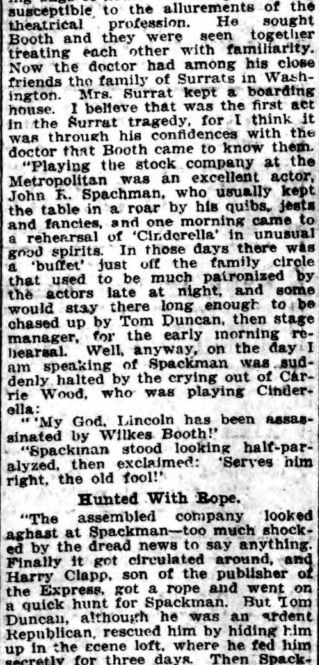
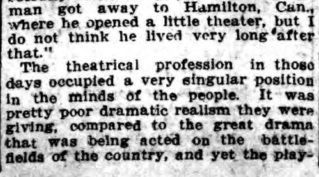
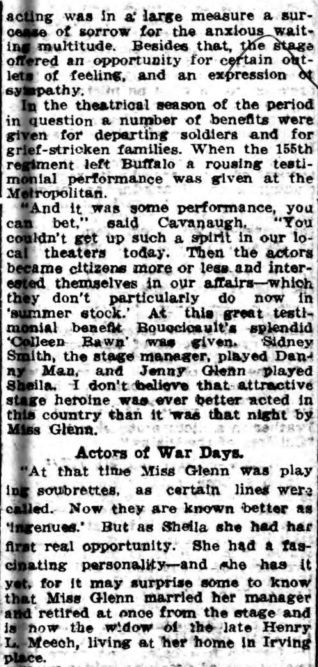

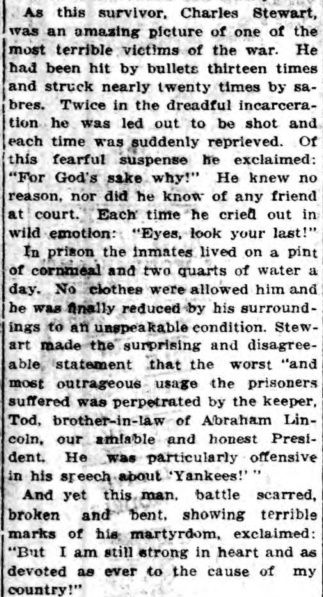
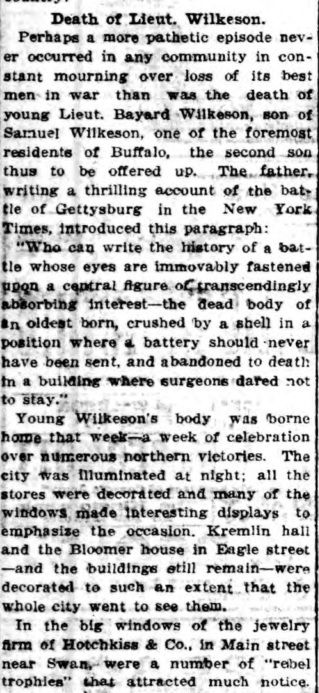
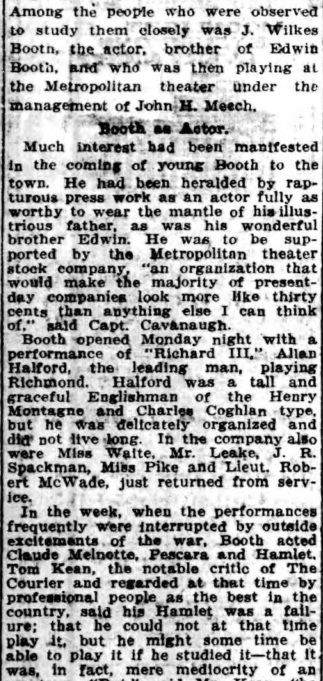
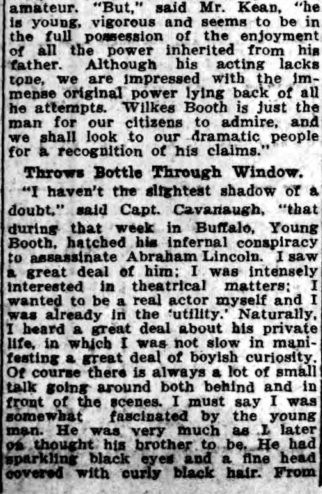
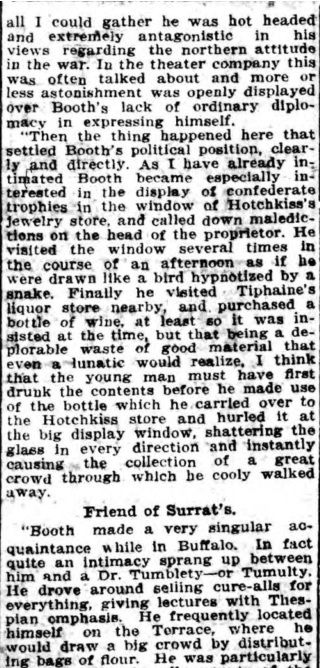
Leave a comment: